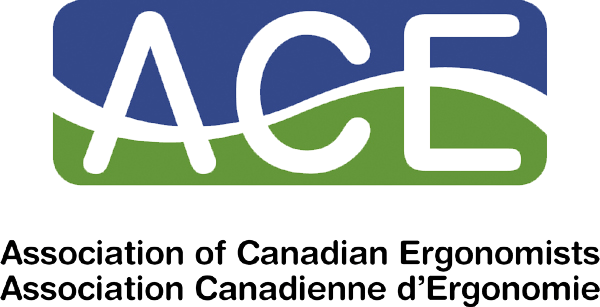Larissa Fedorowich, MSc, AE

How long have you been an ACE member?
I joined the association as a student member in 2014 after starting my Masters’ in the Occupational Biomechanics and Ergonomics Laboratory at McGill University.
How did you first become interested in ergonomics?
Coming from a Kinesiology background, I have always had an interest in sports-related injury prevention and mechanics of the body. My interest in biomechanics and injury prevention was grounded in the statement of my Masters’ supervisor Dr. Julie Côté when she commented: ‘treat the worker as an athlete’. This resonated for me as something I identify as a pivotal moment when the proverbial ‘lightbulb’ went off. At the time I was working on my thesis research project quantifying the effects of modifying computer work posture (sitting, standing, walking on a treadmill) on neck/shoulder patterns during a typing task. This was my first introduction to innovative approaches to bring us to current norms of the quarantined work from home experience that many people have rapidly adopted.
What didn’t you learn in school that you wish you had?
I wish I had more internship or on-site experience in school. However, I lucked out with landing an internship at an Aerospace company after finishing my MSc., and the mentoring I received from the company ergonomist was invaluable. Working with all levels of the organization taught me that on-paper solutions do not always translate into the work environment. The participation and collaboration from the employees performing the work, team leads, management etc. played a vital role in the development of action plans which was necessary to ensure successful interventions.
What is your favorite aspect of being an ergonomist? What is your favorite aspect of being involved in ergonomics?
In my consultant role, I really enjoy problem solving particularly related to workstation design. I enjoy searching for feasible solutions and optimizing set-up which frequently involves some trial and error. My other favorite aspect of being involved in ergonomics is seeing results from interventions. This usually comes in the form of feedback (positive or negative) from the workers who are directly impacted. Incorporating feedback helps to reiterate ergonomics as essential to the workplace and continues to challenge me to expand my knowledge base.
What do you see as the biggest opportunity for ergonomists in the future?
In light of the current global pandemic, we have already seen and experienced a modified workplace taking place all over the planet. I see ergonomists needing to be flexible in adapting the workplace to continue to be productive, safe and efficient in multiple locations. I am inspired by the expansion opportunities of technology advancements such as 3D modeling or exoskeletons, with their application becoming more commonplace as the design and feasibility become more widely available. Lastly, I think the future will include more options for ergonomists to be part of interdisciplinary teams to advance projects that take a more preventative role such as equipment and workstation design.
What advice would you give to a student or young professional starting out in ergonomics?
Pursue every available opportunity to gain as many experiences as possible, including volunteering your time. I have found working collaboratively with a variety of ergonomists to broaden my scope of knowledge and helped shape my approach. Participating in associations, conferences, and webinars, is critical to expanding your knowledge and ability to network with other professionals in the field.
